Did you know that Dunns Creek State Park harbors one of Florida’s most pristine waterways, where crystal-clear springs feed into the mighty St. Johns River? This 6,200-acre natural haven, located in Putnam County, represents one of the few remaining undisturbed ecosystems in northeastern Florida. With diverse habitats ranging from longleaf pine sandhills to cypress swamps, this hidden gem offers visitors a glimpse into old Florida that few get to experience.
Getting There & Planning Your Journey
The welcoming entrance to Dunns Creek State Park
Dunns Creek State Park is located approximately 15 km (9 mi) south of Palatka in Putnam County, Florida. The main entrance is at 320 Sisco Road in Pomona Park, while a secondary entrance can be accessed off U.S. Highway 17 north of Pomona Park.
Plan Your Trip to Dunns Creek State Park
Ready to explore this natural paradise? Find the best flight deals to nearby airports in Jacksonville or Orlando.
From Jacksonville, take I-95 South to FL-207, then follow U.S. 17 South through Palatka to reach the park. From Orlando, take I-4 East to I-95 North, then follow the same route through Palatka. The park is approximately a 1.5-hour drive from either city.
Best Time to Visit Dunns Creek State Park
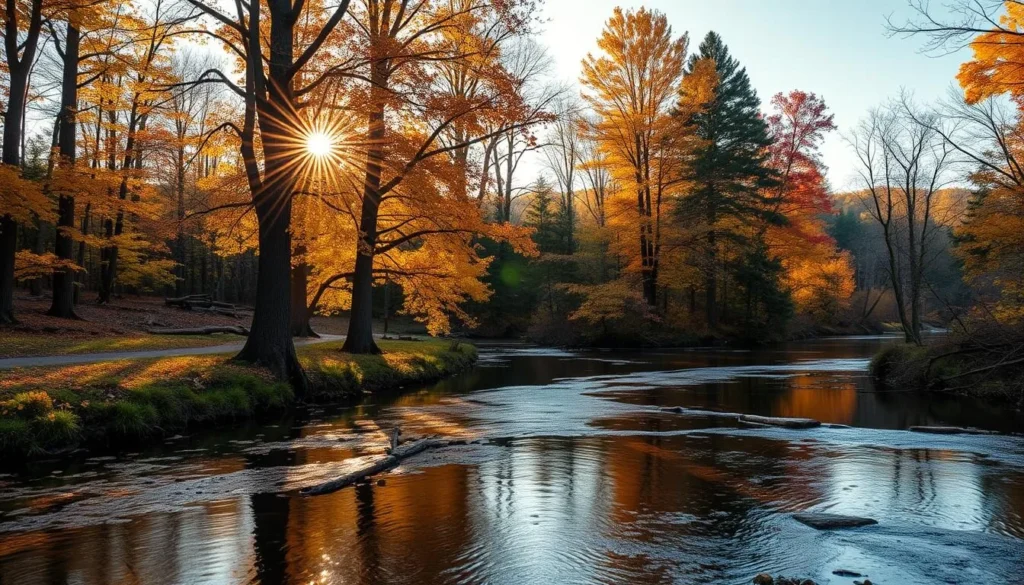
Fall brings comfortable temperatures and stunning colors to the park
Dunns Creek State Park is open year-round from 8 a.m. until sunset, 365 days a year. However, certain seasons offer more comfortable conditions for exploring this natural wonderland.
Recommended Seasons
- Fall (October-November): Temperatures range from 15-26°C (60-80°F) with lower humidity and fewer insects, making it ideal for hiking and wildlife viewing.
- Winter (December-February): Mild days averaging 18-21°C (65-70°F) provide perfect conditions for exploring trails. Occasional cold fronts can drop temperatures temporarily.
- Spring (March-April): Wildflowers bloom throughout the park, and temperatures remain pleasant at 21-27°C (70-80°F) before summer heat arrives.
Seasons to Avoid
- Summer (May-September): High temperatures regularly exceed 32°C (90°F) with extreme humidity and frequent afternoon thunderstorms. Mosquitoes and other insects are also at their peak.
- Hurricane Season (June-November): While the park is open, be aware that tropical storms can affect the area, particularly from August through October.
Pro Tip: Weekdays offer a more solitary experience, as weekends can bring more visitors, especially during spring and fall. Check the park’s website before visiting, as occasional prescribed burns may temporarily close certain trails.
Getting Around Locally
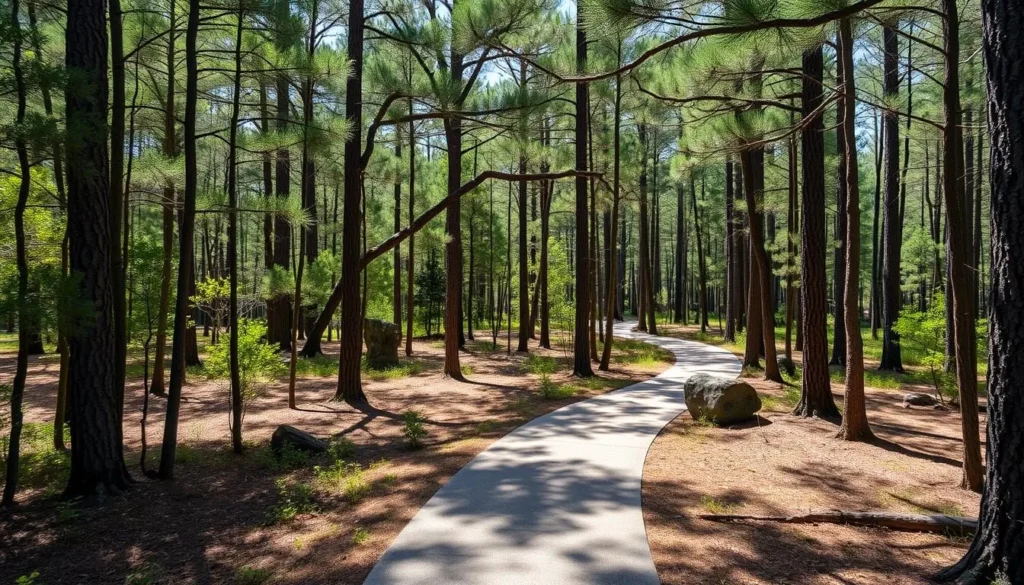
The park features well-maintained trails through diverse ecosystems
Navigating Dunns Creek State Park is straightforward, with several options depending on your preferred exploration style.
By Car
A paved main park drive allows visitors to access key areas by vehicle. You can drive to the main creek access point, which features an ADA-compliant fishing platform, floating canoe launch, restroom facilities, and parking area.
Explore at Your Own Pace
Rent a car to fully explore Dunns Creek State Park and the surrounding natural attractions in Putnam County.
On Foot
The park features several marked hiking trails ranging from easy to moderate difficulty:
- Yellow Trail: A 1.5-mile (2.4 km) loop suitable for both hiking and bicycling that leads to Blue Pond.
- Blue Trail: This longer trail winds through pine flatwoods and sandhill communities.
- White Trail: Connects various sections of the park through diverse ecosystems.
By Bicycle
Many of the park’s trails are suitable for mountain biking, offering an efficient way to cover more ground. Bring your own bicycle, as rental services are not available within the park.
By Water
The floating canoe launch provides access to Dunns Creek for kayaking and canoeing. The creek connects to the St. Johns River, offering extensive paddling opportunities. Bring your own watercraft, as rentals are not available on-site.
Where to Stay

Primitive camping sites offer an immersive natural experience
While Dunns Creek State Park offers primitive camping options, most visitors choose to stay in nearby communities. Here are your best accommodation options:
Primitive Camping
For the adventurous, Dunns Creek State Park offers designated primitive camping sites. These no-frills sites require a permit, which must be arranged in advance by contacting the park office at 386-329-3721. Bring all necessary supplies, including water, as amenities are limited.
- No electricity or running water available
- Pack-in, pack-out policy for all trash
- Fires allowed only in designated fire rings when conditions permit
Nearby Accommodations
For those preferring more comfortable lodging, several options are available within a short drive:
Crescent City (10 km/6 mi)
This charming small town offers several bed and breakfasts and vacation rentals with easy access to the park.
Best for Couples
Palatka (24 km/15 mi)
The largest nearby town features chain hotels, motels, and riverside accommodations with more dining options.
Best for Families
Booking Tip: Reserve accommodations well in advance during peak seasons (spring and fall) and holiday weekends, as options are limited in this rural area.
Dining & Local Cuisine

The park offers scenic picnic areas for visitors
There are no food services within Dunns Creek State Park, so visitors should plan accordingly. The park does offer picnic areas with tables, making it perfect for a packed lunch during your visit.
Picnicking in the Park
Several designated picnic areas are available, particularly near the secondary entrance off U.S. 17 and near Blue Pond. These areas feature tables and trash receptacles but no grills, so plan accordingly if you wish to bring a portable grill.
Nearby Dining Options
For those looking to sample local cuisine, several options are available within a short drive:
Pomona Park
The closest community offers basic convenience stores for supplies and simple takeout options.
5 km/3 mi
Crescent City
Features several family-owned restaurants serving Southern cuisine and fresh seafood from nearby lakes and rivers.
10 km/6 mi
Palatka
The largest nearby town offers diverse dining options, including waterfront restaurants along the St. Johns River.
24 km/15 mi
Local Specialties Worth Trying: While exploring the area, look for restaurants serving fresh catfish, bass, and bream from the St. Johns River system, as well as traditional Southern dishes like swamp cabbage (heart of palm), gator tail, and boiled peanuts.
Attractions, Sightseeing & Activities
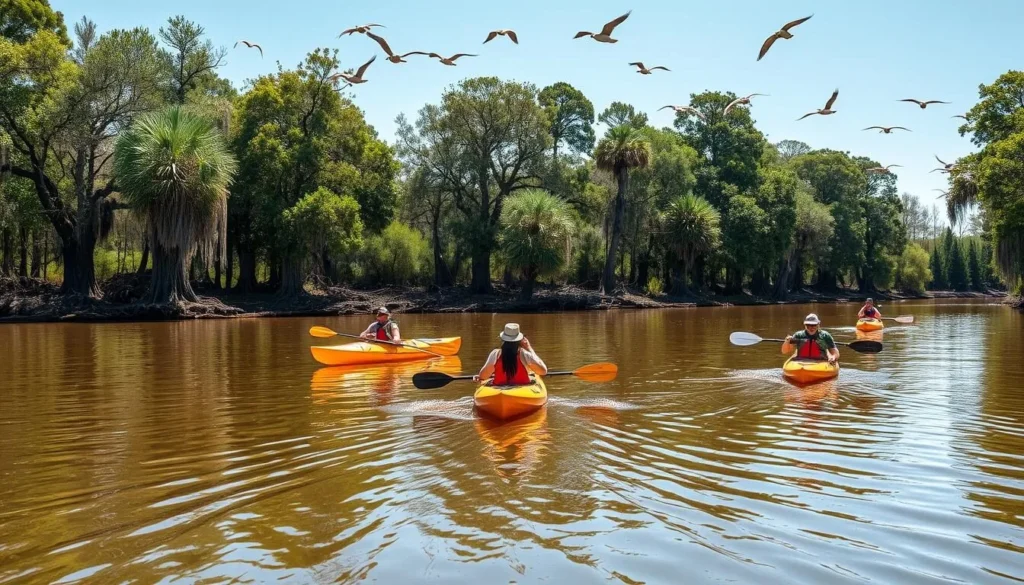
Kayaking on Dunns Creek offers stunning views and wildlife encounters
Dunns Creek State Park offers a variety of activities for nature enthusiasts, outdoor adventurers, and those seeking a peaceful retreat.
Explore Dunns Creek’s Natural Wonders
Discover guided tours and activities that showcase the best of Dunns Creek State Park and surrounding natural areas.
Water Activities
- Kayaking/Canoeing: The floating canoe launch provides access to Dunns Creek, offering paddlers a chance to explore pristine waterways. The creek connects to the St. Johns River, creating extensive paddling opportunities.
- Fishing: An ADA-compliant fishing platform allows anglers to try their luck for bass, bream, and catfish. A valid Florida fishing license is required.
- Blue Pond: This natural spring-fed pond features crystal-clear waters and is accessible via the Yellow Trail from the secondary entrance.
Land Activities
- Hiking: Several marked trails wind through diverse ecosystems, from pine flatwoods to cypress swamps.
- Wildlife Viewing: The park is home to numerous species, including gopher tortoises, fox squirrels, various birds, and occasionally white-tailed deer.
- Photography: Diverse landscapes and abundant wildlife make the park a photographer’s paradise, especially during golden hour.
- Bicycling: Many trails are suitable for mountain biking, offering an efficient way to explore more of the park.

The protected gopher tortoise is among the park’s notable wildlife residents
Sports, Nature & Outdoor Experiences

The park’s diverse ecosystems attract a variety of bird species
Natural Communities
Dunns Creek State Park encompasses several distinct natural communities, each supporting unique plant and animal species:
Sandhill Communities
Characterized by longleaf pines and wiregrass, these upland areas support gopher tortoises, indigo snakes, and fox squirrels.
Pine Flatwoods
These areas feature slash pines and saw palmetto, providing habitat for white-tailed deer and various bird species.
Floodplain Swamp
Dominated by cypress and tupelo trees, these wetlands support amphibians, wading birds, and occasionally alligators.
Wildlife Viewing
The park is home to numerous animal species, making wildlife viewing one of its premier attractions:
- Birds: Look for yellow-crowned night herons, wood ducks, swallow-tailed kites, red-shouldered hawks, barred owls, and various woodpeckers and warblers.
- Reptiles: Gopher tortoises, various snake species, and occasionally alligators can be spotted.
- Mammals: White-tailed deer, gray fox, raccoons, and bobcats inhabit the park, though they’re more elusive.
- Amphibians: Numerous salamander species, toads, and frogs thrive in the park’s wetland areas.
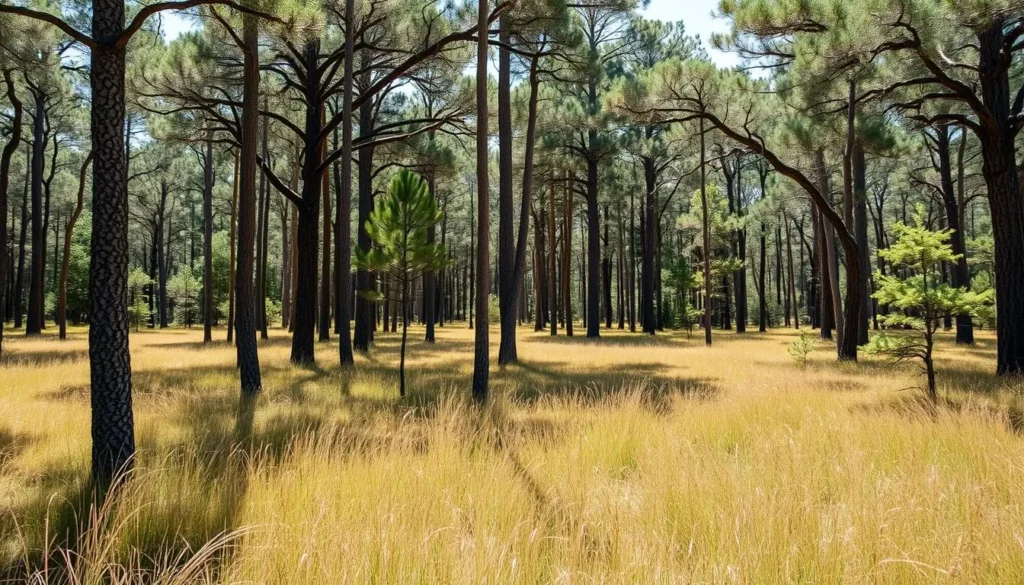
The park’s longleaf pine ecosystem is increasingly rare in Florida
“The diverse natural communities at Dunns Creek State Park represent some of the last remaining pristine ecosystems in northeastern Florida, providing critical habitat for numerous threatened and endangered species.”
Safety, Etiquette & Local Customs
Information boards provide important safety guidelines for visitors
Safety Considerations
- Weather Awareness: Florida’s weather can change rapidly. Check forecasts before visiting and be prepared for afternoon thunderstorms, especially in summer.
- Sun Protection: The Florida sun is intense year-round. Wear sunscreen, a hat, and sunglasses, even on cloudy days.
- Hydration: Bring plenty of water, as drinking water is not available throughout the park.
- Wildlife Safety: Observe wildlife from a distance. Never feed or approach animals, including alligators that may be present in waterways.
- Insect Protection: Mosquitoes and ticks can be prevalent, especially in warmer months. Use insect repellent and consider wearing long sleeves and pants.
Park Etiquette
- Leave No Trace: Pack out all trash and leave natural objects where you find them.
- Stay on Trails: Help protect sensitive ecosystems by remaining on designated paths.
- Quiet Hours: Maintain a peaceful atmosphere for wildlife and other visitors.
- Fire Safety: Fires are permitted only in designated areas when conditions allow.
- Pet Policy: Pets are allowed on 1.8-meter (6-foot) leashes but are not permitted in buildings or on the floating dock.
Important: Cell phone coverage can be spotty within the park. Let someone know your plans before heading into remote areas, and consider bringing a basic first aid kit.
Visitor Comments About Dunns Creek State Park
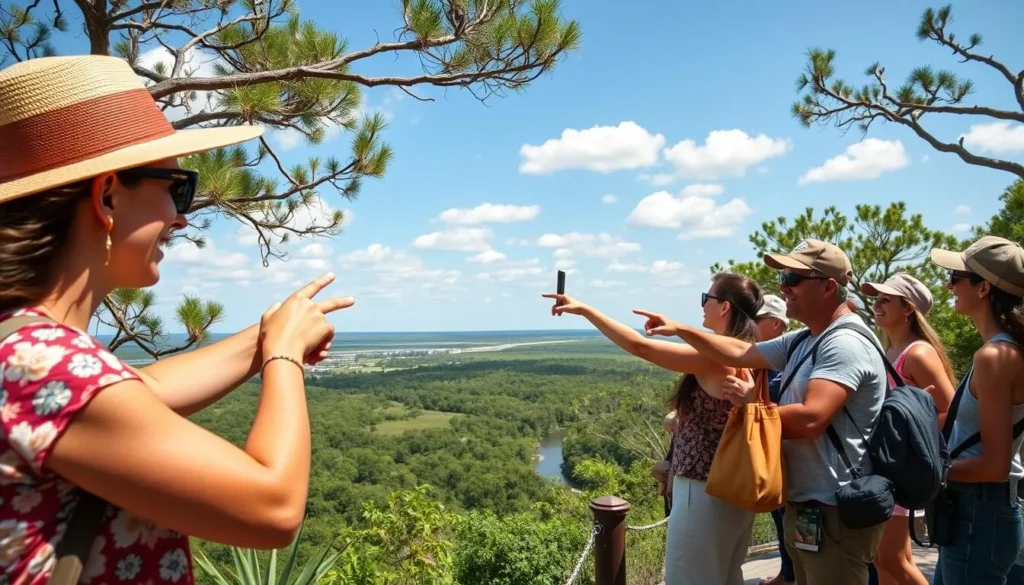
Visitors from around the world enjoy the park’s natural beauty
“We kayaked Dunns Creek and were amazed by the pristine waterway. Saw several alligators, countless birds, and even a river otter! The launch area was well-maintained and easy to access.”
“The hiking trails through the pine forests were peaceful and well-marked. We visited in November and had perfect weather. Bring bug spray though, even in cooler months!”
“Blue Pond was the highlight of our visit—crystal clear water surrounded by pines. It’s a bit of a hike from the parking area but absolutely worth it. One of Florida’s hidden gems.”
What do visitors love most about Dunns Creek State Park?
Most visitors highlight the park’s unspoiled natural beauty, diverse wildlife viewing opportunities, and peaceful atmosphere away from crowds. The pristine waterways, particularly Dunns Creek itself and Blue Pond, receive consistent praise.
What are common visitor suggestions?
Frequent recommendations include visiting during cooler months (October-April), bringing insect repellent year-round, packing sufficient water and snacks, and allowing enough time to hike to Blue Pond from the secondary entrance.
Practical Travel Tips
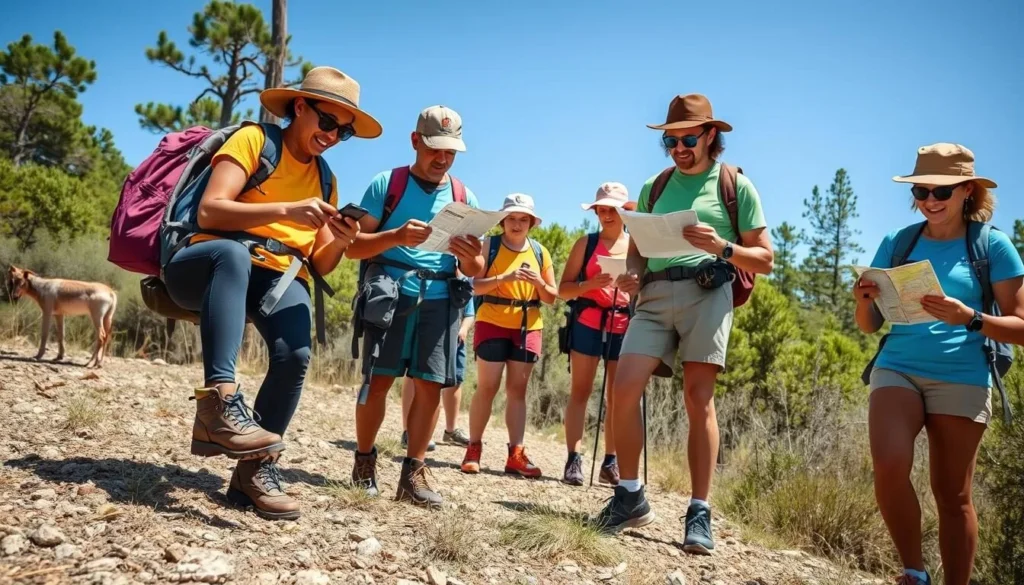
Proper preparation ensures a more enjoyable park experience
What to Bring
- Water: Bring at least 1 liter (1 quart) per person for every 2 hours of planned activity.
- Sun Protection: Sunscreen, hat, sunglasses, and lightweight, long-sleeved clothing.
- Insect Repellent: Essential year-round but especially in warmer months.
- Proper Footwear: Closed-toe shoes or hiking boots for trails.
- Binoculars: Highly recommended for wildlife viewing.
- Camera: The diverse landscapes and wildlife offer excellent photography opportunities.
- Snacks/Lunch: No food services are available in the park.
Practical Information
- Park Hours: 8 a.m. until sunset, 365 days a year.
- Entrance Fees: $4 to $5 per vehicle, depending on occupancy.
- Contact: Park office at 386-329-3721 for current conditions and information.
- Restrooms: Available at the main creek access point and limited locations throughout the park.
- Accessibility: ADA-compliant fishing platform and some facilities, though most trails are not fully accessible.
- Pets: Allowed on 1.8-meter (6-foot) leashes in most areas.
Ready to Experience Dunns Creek State Park?
Plan your complete Florida adventure with accommodations, transportation, and guided experiences.
Experience the Natural Wonder of Dunns Creek State Park
Dunns Creek State Park offers a rare glimpse into natural Florida, where pristine waterways, diverse ecosystems, and abundant wildlife create an unforgettable outdoor experience. Whether you’re paddling the crystal-clear creek, hiking through longleaf pine forests, or simply enjoying the tranquility of this hidden gem, the park provides a perfect escape from the hustle of everyday life. Plan your visit during the cooler months, bring your sense of adventure, and prepare to be amazed by one of Florida’s most beautiful natural treasures.
The above is subject to change.
Check back often to TRAVEL.COM for the latest travel tips and deals.






